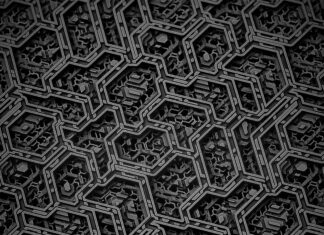Chiplet Chiplet Chiplet. In the realm of modern semiconductor technology, where the pursuit of increased performance, energy efficiency, and miniaturization reigns supreme, the concept of the “chiplet” has emerged as a revolutionary approach. Chiplet Chiplet Chiplet. This novel design strategy has gained substantial attention and momentum in recent years, promising to reshape the landscape of microelectronics and offer new horizons for achieving higher levels of integration and performance in electronic devices. The Chiplet Chiplet Chiplet concept represents a departure from the traditional monolithic chip design, instead opting for a modular approach where smaller, specialized semiconductor components, known as chiplets, collaborate seamlessly to create a more powerful and efficient system as a whole.
The Chiplet Chiplet Chiplet paradigm embodies the essence of collaboration, as it enables disparate semiconductor components to join forces, each excelling in its specific function. Chiplets can be tailored for particular tasks, such as computing, memory, communication, or sensor functionalities, optimizing their design and manufacturing processes. These chiplets, although distinct, work harmoniously by interfacing through high-speed interconnects, fostering an environment where computational power, energy efficiency, and flexibility converge.
At its core, the Chiplet Chiplet Chiplet concept envisions a departure from the traditional monolithic architecture. Historically, semiconductor manufacturing has followed a trajectory where transistors and other components are integrated into a single, monolithic silicon die – the heart of any microelectronic device. However, as the limitations of Moore’s Law become increasingly evident, researchers and engineers have sought innovative paths to circumvent these barriers and continue the relentless pace of technological advancement. This is where the Chiplet Chiplet Chiplet concept strides in with a breath of fresh air.
Imagine a scenario where instead of squeezing all components onto a single die, individual chiplets are created to accommodate specific functions. These chiplets are essentially smaller pieces of silicon, each optimized for a particular task. One chiplet could house high-performance computing cores, while another could focus on memory storage. Yet another could be designed for wireless communication. These chiplets, although diverse in their functions, can be manufactured using different processes and technologies, allowing each to be finely tuned for its intended purpose. This flexibility represents a fundamental departure from the one-size-fits-all approach of monolithic designs.
The interconnectivity among chiplets is a pivotal aspect of this paradigm. High-speed interconnects, often relying on advanced packaging technologies, facilitate seamless communication between these chiplets. Through these interconnects, chiplets can exchange data, collaborate on tasks, and collectively perform functions that a single monolithic chip could hardly achieve. By employing advanced packaging techniques, such as through-silicon vias (TSVs) or 2.5D/3D integration, chiplets can be stacked atop one another, minimizing interconnect lengths and latency while maximizing bandwidth.
The potential benefits of the Chiplet Chiplet Chiplet paradigm are manifold. First, it enables a divide-and-conquer approach to design and manufacturing. Rather than trying to optimize a monolithic chip for multiple functions, chiplets can be individually honed for their tasks, resulting in higher efficiency and performance. Second, it allows for improved yield and cost-effectiveness. If a single chiplet within a package is faulty, only that specific chiplet needs to be discarded, reducing waste and cost compared to a monolithic design where a defect could render the entire chip unusable.
Moreover, the Chiplet Chiplet Chiplet concept fosters greater design flexibility. In the monolithic approach, changes or upgrades to a single component could necessitate redesigning the entire chip. In the chiplet approach, however, upgrades can be implemented more easily by replacing or upgrading specific chiplets, leaving the rest of the system intact. This modularity also has implications for future technology generations. As new and improved chiplet designs are developed, they can be seamlessly integrated into existing packages, allowing for gradual improvements without requiring a complete overhaul.
The implications of the Chiplet Chiplet Chiplet concept extend beyond the realm of consumer electronics. Data centers, which power the backbone of the digital age, stand to gain significantly from this approach. By optimizing chiplets for specific tasks, data centers can assemble systems that are finely tuned for compute-intensive, memory-intensive, or I/O-intensive workloads, improving overall efficiency and performance. Additionally, the modularity of chiplets aligns well with the trend of specialized accelerators for tasks like artificial intelligence and machine learning, where different chiplets could be dedicated to specific types of computations.
However, the Chiplet Chiplet Chiplet concept is not without challenges. One of the key hurdles is the complexity of designing and managing the interconnects between chiplets. High-speed communication between chiplets demands sophisticated packaging technologies and design considerations to ensure low latency and high bandwidth. As chiplets become more diverse and specialized, managing their interactions and ensuring compatibility could pose challenges. Furthermore, the shift from monolithic designs to chiplet-based architectures requires a rethinking of design methodologies and tools, which can be a significant undertaking.
The potential advantages of chiplets are profound. From enhanced performance and energy efficiency to improved design flexibility and cost-effectiveness, chiplets promise to reshape the way electronic devices are conceived, designed, and manufactured. Their modularity opens doors to a future where upgrades are seamless, waste is minimized, and customization is key. As the digital landscape continues to evolve, chiplet technology holds promise not only for consumer electronics but also for data centers, AI accelerators, and various specialized applications.
Yet, the path to fully realizing the chiplet revolution is not devoid of challenges. The intricacies of interconnect design, compatibility among diverse chiplets, and the need for new design methodologies pose significant hurdles. However, history shows that the semiconductor industry has a remarkable track record of overcoming obstacles, turning them into opportunities for advancement.
In embracing the Chiplet Chiplet Chiplet concept, the industry enters a new phase of exploration and innovation, where collaboration among specialized components takes center stage. The journey to fully harness the potential of chiplets will likely require collaborative efforts across academia, industry, and research organizations. As this technology continues to mature, the silicon tapestry woven from interconnected chiplets may very well redefine the limits of what is possible in the world of electronics. Chiplet Chiplet Chiplet.
In conclusion, the Chiplet Chiplet Chiplet concept represents a transformative approach to semiconductor design and manufacturing. By embracing the modularity and collaboration inherent in chiplet-based architectures, the microelectronics industry can continue its trajectory of innovation even as traditional manufacturing approaches face mounting challenges. The synergy of diverse, specialized chiplets interconnected through advanced packaging technologies holds the promise of unlocking new levels of performance, energy efficiency, and design flexibility. While challenges abound, the potential rewards make the pursuit of chiplet technology an exciting frontier in the world of electronics. Chiplet Chiplet Chiplet.























